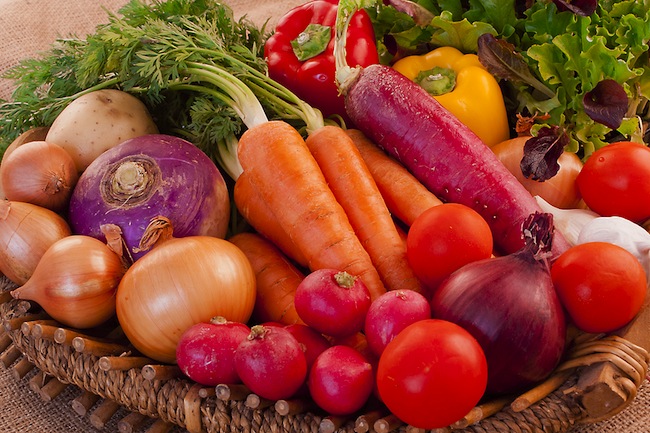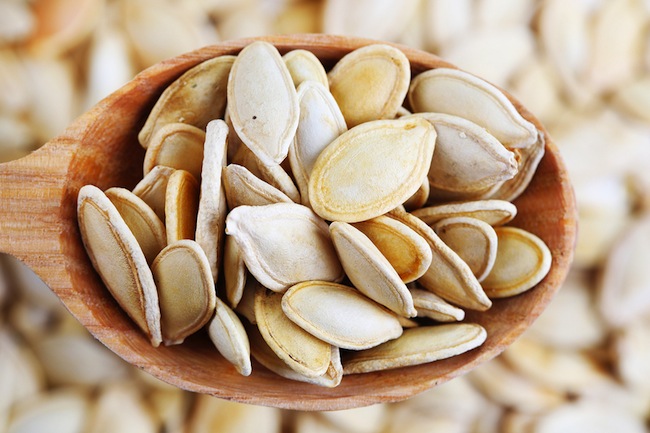- Make It Yourself Lavender Heart-Shaped Bath Bombs!
- 20 Things You Never Knew About “Down There”
- 12 Best Foods For Those Suffering From Arthritis Pain
- 12 Personal Hygiene Mistakes Almost Everyone Makes (Mom Never Told You About #4!)
- 15 Medicinal Plants And Herbs From The Cherokee People
- 12 Mind-Blowing Benefits Of Drinking Coconut Water During Pregnancy
- 12 Outstanding Winter Foods That Won’t Fatten You Up Like A Christmas Turkey
Candida Overgrowth: What to Eat and What Not to Eat to Cure It

Photo credit: bigstock.com
May people suffer from a yeast infection called Candida albicans. This is an especially troubling issue for women. This yeast occurs naturally in the body and lives in the digestive tract, as well as in the mouth and the vagina.
When women get a typical “yeast” infection, they are generally referring to this microorganism, though sometimes combined with others. This happens because there are insufficient amounts of good bacteria in the digestive system or vagina to keep the Candida in check.
Remember that at all times, every minute of the day, various forms of bacteria, pathogens, and viruses are fighting to gain control and take over your body. Our immune system is, therefore, always on guard, always on the lookout, waiting for an attack or trying to prevent one. However, if the body and/or immune system have been weakened or compromised, the immune system may not be strong enough to do its job properly.
Symptoms of chronic Candida overgrowth are fatigue, cognitive problems, skin infections that are difficult to heal, and abdominal pain. Many times these symptoms are misdiagnosed as having another cause. If left untreated, Candida can lead to a condition called leaky gut syndrome. Leaky gut occurs when Candida eventually cuts through the tissues and membranes of the intestines, which allows toxins to leave the digestive tract and enter the blood stream directly.
Candida thrives in an acidic environment. When we have an overly acidic environment, our bodies are no longer able to absorb all the nutrients, minerals, and vitamins that it could get from our foods. It also limits our production of the enzymes that helps our body digest the food we eat.
The following list will help you understand the foods you should not eat, and the ones you should, in order to kill off the overgrowth of Candida. One of the main problems with this diet is that it is very restricted. Try 30 days on this diet and see if it helps your symptoms.
Foods You Should Not Eat
1. Vegetable Oils
This includes corn, peanut, canola, soy, and sesame seed oil.
2. White Vinegar
White vinegar is made from GMO corn in a yeast culture.
3. Sugar
This includes not only regular table sugar, but the hidden sugar in processed foods, fruit juice, ketchup, and soups. Read labels carefully. You should even cut out “natural” sugars such as honey and molasses.
4. Pasta
Pasta is really not much more than flour and water. Flour means white flour, and that is another no no. Noodles are also another food to avoid. This includes ramen instant noodles, semolina, farina, Japanese noodles, and other types of white flour noodles and pastas.
5. Grains
You will need to avoid grains and prepared cereals made from grain including corn, rice, spelt, amaranth, millet, rice, and wheat. Added to this list are granola, instant oats, hominy grits, pearl barley, and cornmeal.
6. Nuts
There are a few nuts you will need to cut out of your diet: walnuts, peanuts, cashews and pistachios. These often contain mold, which is a type of fungus, which is what you are trying to kill.
7. Legumes
Avoid tempeh, tofu, textured vegetable protein and bean sprouts. You also need to avoid sweetened peas and beans, such as baked beans.
8. Baked Goods
This list includes bread, cookies, donuts, cakes, and pastries. Anything made with white flour such as bagels, pita bread, white flour tortillas, sourdough, or any bread that is made from wheat is also on this list. Also, Mochi, the sweet, unleavened bread that is made from brown rice needs to be eliminated.
Continue to Page 2

Photo credit: bigstock.com
9. Beverages
No alcoholic drinks, including beer and wine. Avoid coffee, decaffeinated coffee, regular soft drinks, diet soft drinks, black tea, all fruit flavored teas, and fruit juice.
10. Dairy
Eliminate soymilk, buttermilk, regular milk, sour cream, sweetened yogurt, cottage cheese, and all other types of cheese including cheddar and American cheese.
11. Dried Fruit
Dried fruit is loaded with sugars and candida lives on sugar. This means no raisins, dates, prunes, or apricots.
12. Condiments and Sauces
No ketchup or any type of sauce that contains tomatoes. No dried or powdered garlic, capers, dried or powdered onion, Alfredo sauce, or any type of sauce that might contain vinegar or sugar including A1 Steak sauce, chutneys, flavored vinegars, pickles and sauerkraut. You should also avoid conventional mayonnaise and creamy salad dressings, as these have sugar, vinegar, and milk.
13. Conventional Meats
Factory farmed meats such as chicken, pork, or beef contain hormones and antibiotics and should be avoided. Processed meats need to be eliminated as well, including hot dogs, ham lunch meat, bologna, pepperoni, bacon, salami, and sausage, as these have added sugars to make them tasty.
14. Vegetables
Avoid canned tomatoes, beetroot, carrots, potatoes, cucumber, and mushrooms.
15. Seafood
Almost all fish now contain mercury and other heavy metals. Avoid factory farmed fish.
16. Antibiotics and Other Medications
Check with your doctor before stopping any medications, but be sure to ask him which ones are absolutely necessary and which you can do without. Antibiotics kill all bacteria, good and bad. Also eliminate ulcer or antacids, steroids, and birth control pills. Read more about shocking reasons ehy you should ditch antibiotics.
Continue to Page 3

Photo credit: bigstock.com
Foods You Should Eat
An ideal diet for those with Candida is high in fiber and protein with a small amount of complex carbs and an even smaller amount of fruit. A perfect diet would be about 65 percent of high fiber foods, such as raw or lightly steamed vegetables, 20 percent foods that are high in protein, such as eggs, nuts, fish, or free range chicken, and 10 percent complex carbs such as rice and oats, then 5 percent fresh fruit, such as berries.
1. Vegetables
The best choices are onions, cabbage, turnips, kale, broccoli, celery, asparagus, Brussels sprouts, cauliflower, green peppers, lettuce of all types, parsley, spinach, tomatoes, garlic, radishes, beans, and ginger root. Raw garlic and onions have natural anti-fungal compounds and should be eaten frequently.
2. Grains
Eat these in moderation: buckwheat, whole barley flour, masa harina, air popped popcorn, Graham wheat flour, oat bran, quinoa, wild rice, groats, cream of rye cereal, whole teff and teff flour.
3. Baked Goods
Acceptable baked goods contain no yeast and are unsweetened such as quick breads, unsweetened rice cakes and crackers, tortillas from non-GMO corn, and corn chips made from non-GMO corn. Be sure none of these items have added sweeteners.
4 Legumes
Dried legumes such as chickpeas, garbanzo beans, lentils, black-eyed peas, split peas, and all types of colored beans such as black beans, white beans, navy beans, and pinto beans.
SEE ALSO: Top 10 Super Affordable Superfoods
5. Beverages
Acceptable beverages are almond milk, unsweetened soy milk, plain or carbonated water, Mugicha, coffee substitutes (with no malt), Pau D’Arco tea, and lemonade with no added sweeteners.
Continue to Page 4

Photo credit: bigstock.com
6. Dairy
Dairy items that are acceptable are almond milk, unsweetened soy milk, and plain yogurt with acidophilus cultures.
7. Condiments and Sauces
Chicken broth with no added sweeteners, fresh garlic, ginger, herbs, onion, sea salt or Himalayan salt, pepper, unfermented soy sauce (Tamari), raw, and organic apple cider vinegar can all be consumed.
8. Nuts and Seeds
Acceptable nuts and seeds are pecans, pine nuts, pumpkin seeds, poppy seeds, sesame seeds, sunflower seeds, hazel nuts, Brazil nuts, Macadamia nuts, and almonds.
9. Fruit
Fresh, organic lemons, limes, grapefruit, papaya, and pineapple.
10. Animal Protein
Although some of these are difficult to find, they are not impossible: eggs, elk, antelope, buffalo, free range, organic beef, partridge, goose, goat, pheasant, quail, turkey, free range, organic chicken, and mutton (sheep).
This is an extremely restrictive diet and is missing many key vitamins and minerals. Be sure to take a high quality multivitamin supplement while you are on this diet to remove Candida from your body. Eating these foods will foster a healthy level of Candida and a healthy, strong immune system.

































